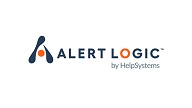Kickstart Guide to Implementing the NIST Cybersecurity Framework
The NIST CSF is made up of core, tiers and profiles. The core is the bulk of the NIST CSF and is made up of five categories and 108 sub-categories. Tiers help you measure maturity, and profiles help you set priorities.
Closing the Gaps in Your Ransomware Strategy
Cybercrime is one of the leading causes of data center downtime, and when a business is hit with a ransomware attack, the losses can be staggering.
An Executive's Guide to Ransomware Protection as a Service
To help you find the information and insights you’re looking for, we’ve divided this eBook into three sections:
Ransomware in Focus
New Research on CISO Perceptions, Perspectives and Plans for Weathering the Storm
How to Upgrade Your Cyber Risk Management Program With NIST
In this guide, we’ll outline NIST objectives and the differences between NIST 800-171 and 800-53 along with a checklist to help you get your organization started with NIST compliance.
Have a strong compliance program? Use it as a foundation for risk management.
Organizations around the world must all close this gap. But where to begin? If you have a compliance program, you are off to a great start.
Privileged Access: Slashing Risks
Did you know that 61% of data breaches start with privileged credential abuse?
Privileged Access Management Best Practices
In this guide we detail the best practices involved in minimizing the security risks associated with standing privileged accounts. Then we explore the modern alternative and offer a proven solution for implementing it.
Five Best Practices for Improved Risk Management
As businesses settle into the “new normal” of a riskier security environment, they need a more strategic approach to managing these risks, beyond just “check the box” compliance. Here are five best practices for achieving this goal.
NIST CSF Controls and Netwrix Functionality Mapping
The U.S. National Institute of Standards and Technology (NIST) cybersecurity framework (CSF) for identifying, measuring and managing cybersecurity risks is not a regulatory mandate; there are no fines or other penalties for choosing not to use it.
Solving Ransomware Threats: Insights into Current Leadership Actions
Solving ransomware threats is a top concern among many company leadership teams, not just those in IT departments. To properly prepare for such a threat, businesses must begin taking a much more comprehensive approach, emphasizing the recovery aspects that too often get less attention.
The Security Culture Report 2022
The 2022 Security Culture Report (SCR) is the largest, globally recognized research into security awareness, behavior and culture available. The SCR offers unique insights which allow organizational leaders to better understand how employees view security within their organizations.
3 Steps to Getting Started With Cyber Risk Quantification
In today’s ever-evolving security landscape, cyber risk is constantly increasing — making it critical for you to be able to effectively analyze your organization’s security performance over time. In a 2020 survey conducted by Harvard Business Review
Analytic Services, 74% of 168 executives named cyber risk as one of the top three risks their company faces today.
Phishing by Industry Benchmarking Report | 2022 EDITION
Verizon’s 2022 Data Breach Investigations Report states that “the human element continues to drive breaches. This year, 82% of breaches involved the human element.





















